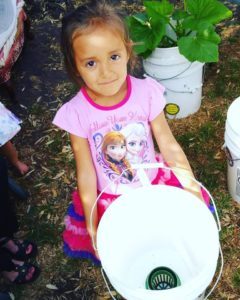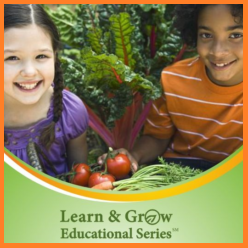 Welcome, parents, students, educators, community leaders, and apartment/condo gardeners! KPS4Parents has developed this online resource to help you learn and educate the children in your life about where food comes from, why it is important to understand our food and how it relates to our health, and how to control what is in at least some of our food through home and cooperative gardening.
Welcome, parents, students, educators, community leaders, and apartment/condo gardeners! KPS4Parents has developed this online resource to help you learn and educate the children in your life about where food comes from, why it is important to understand our food and how it relates to our health, and how to control what is in at least some of our food through home and cooperative gardening.Our Focus on Child Development & K-12 Education, including the Common Core & STEM
In the United States, the Common Core is a set of educational standards that describe what each student should hypothetically know by the end of each grade in the kindergarten through 12th grade public education system. Each of the 50 States has the option to adopt the Common Core as its educational standards or create its own educational standards for public school student achievement. The Common Core seeks to create continuity for children living in America’s mobile society who move from one state to another and may experience significant discrepancies between what is expected of them at school in one state versus another.
One of the hallmarks of the Common Core is its emphasis on the application of academic knowledge to real life situations. The idea is that students will realize and appreciate the value of the knowledge when they see they can use it to solve their own problems in life and, presumably, become more invested in learning it. This is intended to help develop our future leaders with practical knowledge that will better inform their decisions.
The educational outcomes targeted by the Common Core are not appropriate just for American students. They are things children need to know by certain points throughout their development in order to become adults who can competently participate in global society and commerce. There is also an international need to invest resources into quality educational programming that addresses science, technology, engineering, and mathematics (STEM).
Teaching students how to increase their self-sufficiency and know what is in at least some of their food by growing it themselves equips them with a lifelong skill set that can help them get through even the leanest economic times so long as they have access to the necessary materials, which are not difficult to come by if you know what you’re doing. This type of teaching relies on the aspects of child development that are the result of an impressive body of work begun by a researcher named Lev Vygotsky (1896-1934). Vygotsky studied the impact that environment, culture, and the influence of more knowledgeable others have on fostering children’s development. His work and that which has built upon it make the evidentiary case for the value of direct instruction and the ways by which it is most effective.
Another researcher, Urie Bronfenbrenner (1917-2005), studied the effects of environment on learning behavior and development. He and the researchers who built upon his work have established the evidentiary basis for the assertion that human beings as a species alter environments that then alter our development. This is no small thing. To our current knowledge, we are the only species on the planet to do this as we do; it is one of our defining characteristics that sets us apart from other species.
Humans seek to change environments, meaning that we have to continually adapt to our environments, which promotes learning and problem-solving skills. Our species participates in a self-perpetuating cycle in which we do things to the environment, which requires us to adapt to our environment once it is changed, and, in adapting, we often change things more, which causes us to adapt further.
It’s all quite fascinating science. It also puts our species’ coming full circle about food – from a parting of ways with home gardening and farming in favor of decades-long dependence upon grocery stores full of commercially grown and processed food to our emerging return to local gardening and farming – into perspective. We adapted our environments to our desire for convenience and, in doing so, created the most common causes of death in the United States – diet-related health disorders. Now that we’ve realized what we’ve done to ourselves, we’re starting to adapt our environments, again, for the betterment of our collective health.
Knowing their power to shape environments, educators have an ethical responsibility to create learning environments that foster student learning and development. When schools fail to create learning environments that promote student and staff development, the outcomes include marginalized student populations that are more likely to experience poverty, violence, incarceration, public mental health services, teen pregnancy, and/or drug/alcohol problems. Similarly, parents and community leaders need to be equipped with the knowledge and skills to act in kind and in concert with our schools in developmentally appropriate ways so that all our children have nurturing, safe environments in which to develop to their full potentials.
The content on this site seeks to contribute to positive learning experiences for children and the adults in their lives through gardening using a specific gardening method: self-watering bucket containers. The reasons for this are simple; self-watering bucket containers:
- Are easy to make, maintain, and re-use for many growing seasons
- Can be made with recycled materials, which means no-cost to low-cost depending on how you come by your supplies
- Don’t require open ground (they can be placed on paved surfaces, gravel, or other spaces otherwise not suitable for gardening)
- Conserve water
- Block many pests (gophers will not burrow up through the bottoms of the containers, for example)
- Are easily relocated (either move them in small spaces throughout the seasons to follow the sun or move them to an entirely new location, which is great for apartment-dwellers and other renters who may need to move mid-growing season)
- Fit in small spaces, making them great for home gardeners and school sites with limited space for gardening (a self-watering container built using two 5-gallon buckets has a footprint of about 1 square foot)
- Raise plants up off the ground, making them easier to reach for seniors and children (a self-watering container built using two 5-gallon buckets stands 18 inches tall, not including the height of whatever grows out of it)
- Have tremendous potential for a wide variety of instructional opportunities through their use, not the least of which are many STEM-related activities
For community and service organizations, such as Scouts and Kiwanis, we also have project-based learning activities that are intended to engage and educate volunteers and the beneficiaries of their efforts alike. For families looking for home gardening projects with their kids, self-watering container gardening is relatively easy. The size of a container garden is easily controlled for simply by limiting the number of containers used, making it easy to scale your home self-watering container garden to fit your environment.
For apartment and condominium gardeners, the information you find here can be used to build your own container gardens, as well. For more information on apartment and condo gardening, you can also visit UrbanOrganicGardener.com.




